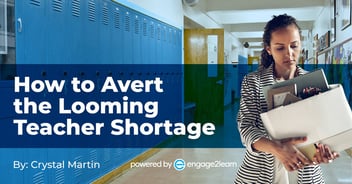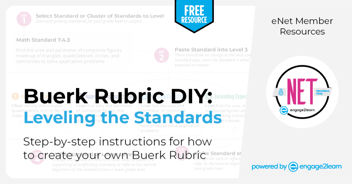How to Hire the Right People Every Time | engage2learn
Job, Career, or Vocation
Every person deserves to spend their working life doing something they enjoy. Unfortunately, not all people get that opportunity. There are three different ways people label their work. One way is to think of the 40 hours per week as a job. People have to make money to survive and pay the bills. Working a job, however, does not necessarily mean they get much enjoyment out of their work; it is a necessary means to an end. The start of each workday is something they dread and just look forward to getting to the end of it or the end of the workweek. The second way to think about our work is to view it as a career. In this category, people have chosen a particular field because of interests or the benefits of that profession and the passion they have for that type of work. People who have a career tend to get more enjoyment out of their work and experience less dread about the workday itself. A third way to view work is as a vocation. The simplest definition of vocation, essentially, is that it is a calling. In other words, engaging in this type of work will fulfill the meaning and/or purpose of a specific person’s life. This is our e2L mantra and how I came about my own work as CEO; in fact, I have felt this way since I became a teacher at just 22-years-old. Every step of my work-life seemed to be a calling that led me to the next. It is my hope that every person has that same experience. This is one very large reason I am working to make public education relevant: school can be a place where everyone is able to discover their unique gifts, so they are actually pursuing a passion and finding a way to have meaningful work.
Hiring Systems: Why They Matter
To make a good match, the hiring process is very critical to ensure that both the person being hired and the employer are making the kind of match that would lead to a candidate really living a meaningful life. To that end, we have developed a process at engage2learn to be sure that both parties have as much information as possible to make the right and best decision for their individual situation. We have crafted a working interview process that allows us to get to know the person – and provide him or her the opportunity to get to know us – before we collectively make that important decision, which inevitably will lead to us spending much time together in the future.
5 Components of our Working Interview Process
There are five components of our working interview process that have proven to be essential to the development of our best team ever: the e2L Dream Team! We want every person that comes to work with us to feel like this is their vocation, this is their calling, and this is the place they’re supposed to be to fulfill the purpose for their life. Therefore, we have to make sure they clearly understand what we are all about and how this meaningful, yet rigorous work will play out in their lives.
- We conduct the first interview via phone, and our application process is much like other organizations; this serves as our initial screening.
- This is where it gets interesting for our potential new candidates and us! We craft a customized challenge depending on the role in the organization that is available to new hires. So, if it were a Business Operations, or “Ops,” position (such as an executive assistant, a programmer, or social media marketing), we would create a challenge that is essentially real, authentic work similar to work they could be doing if hired. If it were a Coaching position, again, the challenge would be representative of the work they could be doing in the field.
- Next, we conduct a formal Working Interview. For the abovementioned Ops position, those persons complete the challenge in the context of their virtual working environments, with us being available as a resource to them throughout that process. When looking to hire new coaches, however, we bring all of the potential candidates together. We have them work collaboratively on the challenge, with some of our current coaches observing and working alongside them.
- Part of the challenge itself is discerning what someone can overcome in a relatively short period of time. Our process really tests their true, in-the-moment reactions in stressful situations and assesses what kind of growth mindset they embody when put into unfamiliar territory. This helps us to make a more accurate assessment as to whether or not this particular working relationship is going to be ideal for everyone involved.
- Lastly, we ask all of our potential candidates to self-assess and reflect upon this process, reporting their take-aways to our hiring team. We have literally had people decide by the end of a working interview that this particular work is not what they thought it was going to be or was not the right kind of work for them. Frankly, that decision saves all of us so much time, money, and heartache. It is much better for us to invest that amount of time and be able to make a more accurate decision.
Don’t Forget about Culture!
The final and, perhaps, the most important part of our working interview process is the inclusion of our Cultural Tenets! We utilize these pillars during the Question / Answer period in our hiring system. Similar to speed dating interviews, we pose several questions to each potential candidate, which are centered around our e2L cultural tenets. These detailed scenarios provide the candidate with information about the type of culture that we desire and expect; their intuitive, instinctive behaviors and responses, in turn, tell us if they would actually be in line with our core beliefs. Regardless of your current interview process, I hope this inspires you to think about how you could closely mirror the actual work your potential hirees will be doing so that everyone involved can more accurately assess if this match is right. The more time spent upfront will inevitably save you so much in the longer run. Research shows that each new hire costs approximately $20,000 in hiring and onboarding alone; that is something to think about when evaluating your Hiring Systems (Sutcher et al., 2016, p.38.) For more information, check out our white paper: Fixing the Leaky Pipeline: How to Retain Teachers through Talent Transformation.



